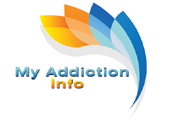
What To Know About Combining Prescription Drugs and Alcohol
What's In This Article?
The number of people worldwide who use different forms of prescription, non-prescription and herbal remedies to treat various forms of pain and other psychological conditions is on the rise. This begs the question about the effects of combining prescription drugs and alcohol. What should people know about the risks of prescription drugs and alcohol used together?
Many Americans also take medications to manage chronic conditions such as diabetes, high blood pressure, and high cholesterol. Furthermore, as these chronic conditions are likely to increase with age older Americans have been found to consume as many as ten pills of prescription medications daily many of which reacts negatively with alcohol.
Americans and Alcohol
Before exploring the specific effects of mixing prescription drugs and alcohol, it’s helpful to learn more about alcohol use statistics. The Centers for Disease Control CDC reported that over two-thirds of American adults over the age of 18 use alcohol at least occasionally. An estimated 51% are regular drinkers (they had at least 12 drinks the previous year) another 13% are occasional drinkers (they had less than 11 drinks the previous year).
Having alcohol either occasional or frequently increases the chances of developing other medical conditions such as substance use disorder. The mixing of alcohol and other medications has been found by several studies to increase the likelihood of developing serious physical and mental health issues. Mixing alcohol with medications not only increases the effect of those drugs it also increases the risk of being addicted to them.
Alcohol and Substance Abuse
People who misuse alcohol are also more likely to abuse other substances ultimately. Drinking and taking drugs can quickly spiral out of control, leaving you at risk for potentially permanent health complications.
People usually do not plan to be addicts. Substance abuse and alcoholism start gradually. Many people start off by experimenting and mixing smaller doses of their favorite drugs with alcohol.
Over time their body develops a resistance or tolerance to the drugs, and in order to produce the usual effect and not to have withdrawal symptoms, they have to mix more with alcohol, They ultimately become dependent and crave for more. Many individuals have been known to turn to hard drugs like heroin, cocaine, and others which are more addictive in cases like this to produce a much intense high.
Alcohol and Drug Use Side Effects
Many drugs contain about 10% alcohol concentration. Taking a mixture of alcohol and drugs over a period of time will affect the body adversely. While some effects may be minor and temporary others may be major and permanent. The nature of the impact on the body usually depends on some factors like the length of time of the substance and alcohol abuse, the amount of alcohol consumed, the type of drug abused, the amount of drugs abused, etc. A typical example is mixing alcohol with heroin has greater consequences than mixing alcohol with tobacco.
Some short-term alcohol and drug use side effects are:
- Experience difficulties in controlling muscles
- High or low heart rates
- Intense feelings of anxiety, fear, and sadness
- Lowering inhibitions
- Reduced concentration
- Respiratory problems
- Short-term memory loss
Coupled with the many short-term side effects of alcohol and substance abuse, there are some complications that increase the risk of developing other health issues in the future. These are typically long-lasting complications. They include;
- Damage to internal organs
- Long-term memory loss
- Lack of coordination skills
- Muscle and bone fracture
- Nasal perforation (in cocaine abuse)
- Problems coping on the job or in school
- Poor nutrition
Mixing Alcohol and Other Substances
Alcohol and Antidepressants
When it comes to the discussion of prescription drugs and alcohol, antidepressants can be a good place to start. Antidepressants like Zoloft or Prozac are usually prescribed to treat mental health conditions. Mixing them with alcohol increases the side effects of each. This mixture also increases the feeling of depression and anxiety which can lead to insomnia and impaired judgment.
Alcohol and Cocaine
Cocaine is one of the most commonly abused drugs because it produces an intense high by increasing the heart rate and alertness. The mixture of these two drugs causes cocaethylene. Harmful effects of this mixture include heart, overdose or death.
Alcohol and Ecstasy
Mixing ecstasy with other drugs increases the intensity of the high produced. Taking a mixture of ecstasy with alcohol encourages you to take more alcohol over a short time period. This causes dehydration, diarrhea, excessive sweating, heat stroke, nausea, and vomiting.
Alcohol and Heroin
Heroin is highly addictive and when taken with alcohol can cause serious breathing problems that can lead to death. This mixture also reduces the heart rate and may lead to an overdose.
Alcohol and Marijuana
Both substances are depressants and a mixture of the two increases the risk of an overdose. Other effects of taking this mixture includes dizziness, high anxiety, nausea, paranoia, and vomiting.
Alcohol and Painkillers
The most dangerous combination when it comes to prescription drugs and alcohol usually involves prescription pain medications. Vicodin, Xanax, and OxyContin are some of the most common painkillers in America. Taking a mixture of alcohol and painkillers causes serious health issues. This combination can greatly increase the chances of developing liver problems.
When someone uses prescription drugs and alcohol like opioid pain relievers, they are at a much higher risk of overdosing. This is because both prescription drugs and alcohol are central nervous system depressants. If someone combines these prescription drugs and alcohol, there is a high probability the combination will slow their breathing and heart rate to a dangerous level.

